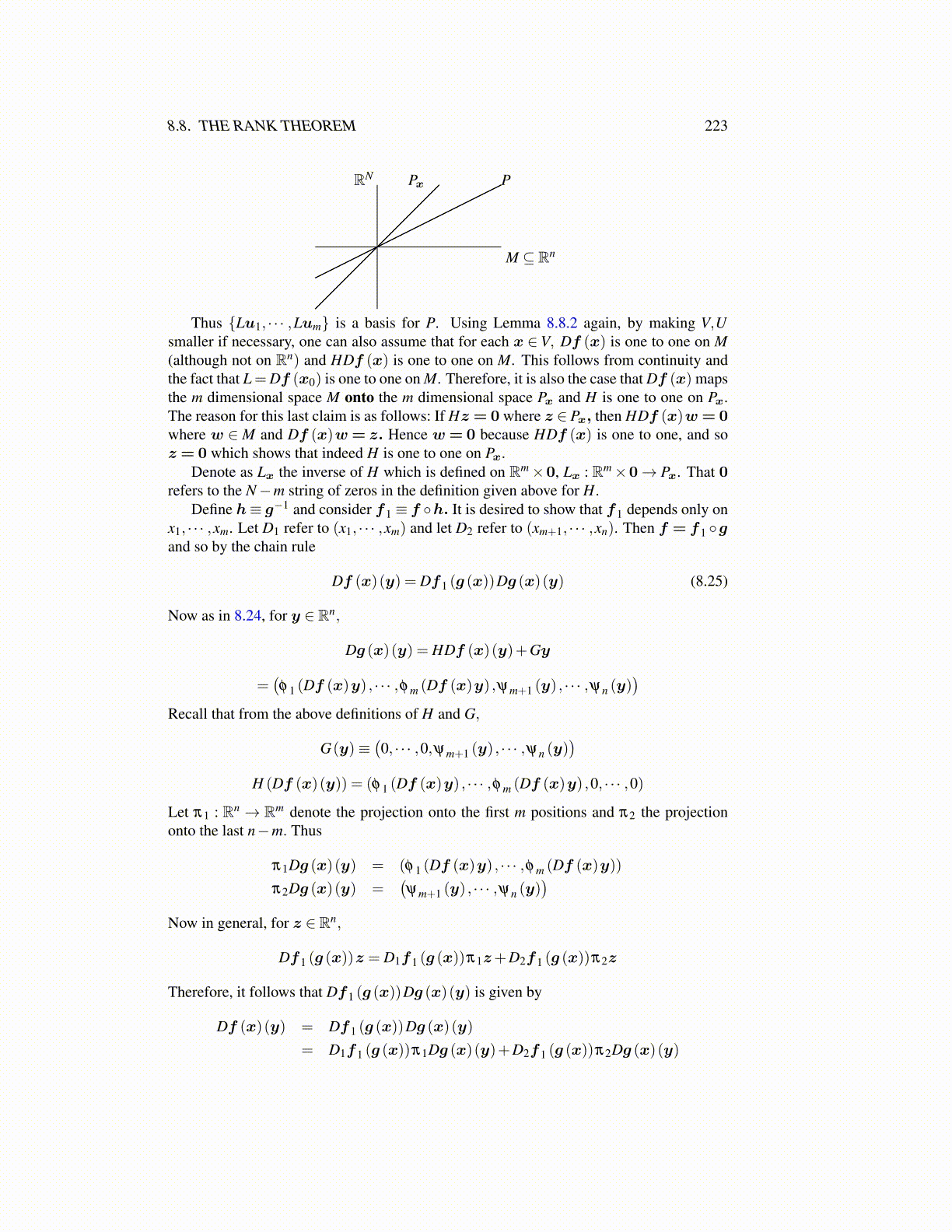
8.8. THE RANK THEOREM 223
PPx
M ⊆ Rn
RN
Thus {Lu1, · · · ,Lum} is a basis for P. Using Lemma 8.8.2 again, by making V,Usmaller if necessary, one can also assume that for each x ∈ V, Df (x) is one to one on M(although not on Rn) and HDf (x) is one to one on M. This follows from continuity andthe fact that L =Df (x0) is one to one on M. Therefore, it is also the case that Df (x) mapsthe m dimensional space M onto the m dimensional space Px and H is one to one on Px.The reason for this last claim is as follows: If Hz= 0 where z ∈ Px, then HDf (x)w= 0where w ∈ M and Df (x)w= z. Hence w= 0 because HDf (x) is one to one, and soz= 0 which shows that indeed H is one to one on Px.
Denote as Lx the inverse of H which is defined on Rm×0, Lx : Rm×0→ Px. That 0refers to the N−m string of zeros in the definition given above for H.
Define h≡ g−1 and consider f1 ≡ f ◦h. It is desired to show that f1 depends only onx1, · · · ,xm. Let D1 refer to (x1, · · · ,xm) and let D2 refer to (xm+1, · · · ,xn). Then f = f1 ◦gand so by the chain rule
Df (x)(y) = Df1 (g (x))Dg (x)(y) (8.25)
Now as in 8.24, for y ∈ Rn,
Dg (x)(y) = HDf (x)(y)+Gy
=(φ 1 (Df (x)y) , · · · ,φ m (Df (x)y) ,ψm+1 (y) , · · · ,ψn (y)
)Recall that from the above definitions of H and G,
G(y)≡(0, · · · ,0,ψm+1 (y) , · · · ,ψn (y)
)H (Df (x)(y)) = (φ 1 (Df (x)y) , · · · ,φ m (Df (x)y) ,0, · · · ,0)
Let π1 : Rn → Rm denote the projection onto the first m positions and π2 the projectiononto the last n−m. Thus
π1Dg (x)(y) = (φ 1 (Df (x)y) , · · · ,φ m (Df (x)y))
π2Dg (x)(y) =(ψm+1 (y) , · · · ,ψn (y)
)Now in general, for z ∈ Rn,
Df1 (g (x))z = D1f1 (g (x))π1z+D2f1 (g (x))π2z
Therefore, it follows that Df1 (g (x))Dg (x)(y) is given by
Df (x)(y) = Df1 (g (x))Dg (x)(y)
= D1f1 (g (x))π1Dg (x)(y)+D2f1 (g (x))π2Dg (x)(y)